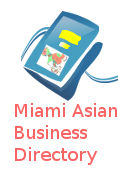
People- Mongolia's Population and Ethnic Groups
Population. In the Conception for development of Mongolia , it is stated that citizens of Mongolia with high levels of creative force, knowledge, education, spiritual and professional expertise are the source of the development of Mongolia .
For the time being the population of Mongolia stands at 2.5 million, which as against that recorded in the 8th Bogd Khan’s Mongolia, i.e. in 1918, has risen as much as 3.7 fold over a more than 80-year period.
The population density of Mongolia is 1.5 persons per square km, making Mongolia one of the most sparsely populated countries in the world.
The natural growth rate per 1000 of the population made up 3.6 per cent in 1980 and in 2000 was reportedly 1.4. In connection with such a drop in the population growth rates, the President of Mongolia issued a resolution on policies to be pursued in this sphere. The resolution underlined that it would be appropriate to carry out a policy aimed at preventing further decline in the population’s annual average growth rates, securing the purity of the Mongolians’ gene pool. For this purpose, the traditions of keeping genealogical records were reinstated to be kept by every household and ancestry and family records of citizens are being carried out with a view to ensuring favorable social, economic, scientific, cultural, natural and psychological environs for Mongolia ’s population growth and safeguarding the purity of the Mongolians’ gene pool.
Ethnic groups. More than 90 per cent of the country’s population constitutes Mongolian nationalities. The core Mongolian nationality, being Khalkha distributed all along the territory of the country, makes up 80 per cent of its population. The other major group, the Kazakhs, makes up about 6 percent of the population and lives in western Mongolia , mainly in Bayan-Ulgii aimag. Many Kazakhs immigrated to Kazakhstan in the early 1990s, but many have since returned.
As for the linguistic reference of the Mongolian population, it relates to the Mongolian group of the Altaic family except for Kazakhs. This group is composed of Khalkh, Durvud, Buryad, Bayad, Uriankhai, Zakhchin, Darkhad, Torguud, Uuld, Myangad, Barga and Uzemchin dialects.
The Mongolian group stemmed from the ancient Mongolian people and Mongolian tribes being parts of the Mongol Empire founded in 1206 by Chinggis Khan. The ancient Mongolian tribes comprised the medieval Aimag (principality) of Mongolian tribes. The current “aimag” of Mongolia means its administrative and territorial unit. That is why the dominant tribes and nationalities that used to comprise the ancient Mongolian group are now spread along all the aimags (provinces) of Mongolia . However, the traditional settlement patterns of the dominant tribes and nationalities of the ancient Mongolian principality still can be easily traced back even now.
Thus, Mongolia viewed as the heart of the Mongolian race, spreading worldwide Mongols who comprise one single family developed from a common ethnic origin.
The Land

Mongolia is one of the few countries in the temperate belt of the northern hemisphere with its vast territory, perfect ecosystem and virgin land. Mongolia ranked as the seventh largest country in Asia for its territory, which covers an area of 1.564.100 sq. km, larger than the overall combined territory of the United Kingdom , France , Germany and Italy . It is one of the land-locked countries. Mongolia lies in 41° 35’ N. Lat and between 87° 44’ and 119° 56’ E. Long in the north of Central Asia . Mongolia bordered to the north by Russia and to the east, south and west by China . Its total borderline is 8161.8 km long, 3485 km of which is with Russia and 4676.8 km is with China . Within Mongolia , the Mongol Altai Mountains occupy an extensive area of 2392 km from west to north. There is a distance of 1259 km between the Soyon mountain ranges in the Gobi in the south. The nearest body of water to Mongolia is the Yellow Sea , 700 km away in the east.
Culture
Since the political and economic transition of the 1990s, the country has gone through many changes quickly, and there are many more ahead. Its cultural community seeks new and different ways to preserve and sustain arts and culture in Mongolia 's new economy.
The Government directed the Education, Culture and Science Minister to approve a "Master Plan for the Development of Mongolia's Culture and Art" with a view to define policy guidelines for the next ten years. /2003 2013/.
The literacy. Mongolia is the one of the oriental countries with an ancient and unique culture. The Mongolian script created by Mongols is one of the six most recognized alphabets used in the contemporary world. The earliest monument, which scientists call "Chinggis' stone inscription", was created in 1225. It was dedicated to Esunkhui- hero, who managed to shoot all targets from a distance of 500 meters during the archers' competition when Chinggis Khaan celebrated his victory over the Sartuul tribes.

In 1204 by the order of Chinggis Khaan, the Mongolian script had a state status and the 800th anniversary of this event will be celebrated in Mongolia next year.
The Mongols developed their alphabet many centuries ago, but because of their nomadic way of life and continued wars and campaigns, very few ancient literary monuments have actually survived.
All the best works of history, culture, philosophy and literature, written in Mongolian, are kept in Mongolian Central Library with great care. From the 1990s, the renaissance of Mongolian script began by teaching it in all secondary schools. As a result, nearly half of all Mongols now write and read in traditional script. It should be noted that the State Ikh Khural approved the Law on State Official Language.










